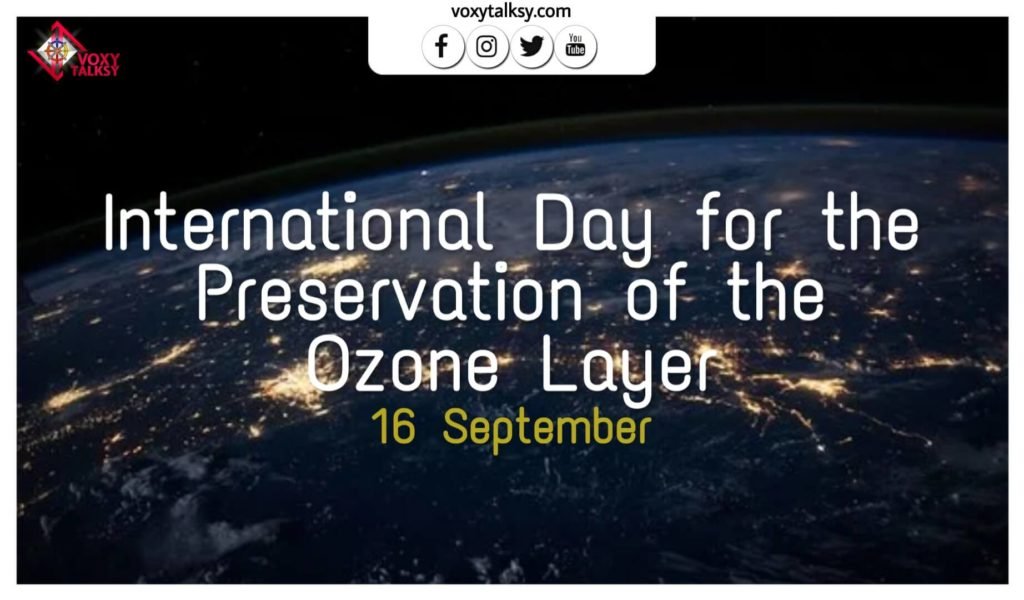The United Nations General Assembly assigned 16 September as the International Day for the Preservation of the Ozone Layer. This agreement had been made on December 19, 2000. The date was recognized in 1987, on which countries marked the Montreal Protocol on Substances that Deplete the Ozone Layer.
Background
In 1987, spokespersons from 24 nations met in Montreal and declared to the world that the time had come to quit depleting the ozone layer. In this manner, these nations submitted themselves, through the Montreal Protocol on Substances that Deplete the Ozone Layer, to free the universe of substances that undermine the ozone layer.
On December 19, 1994, the UN General Assembly announced September 16 as this day. It remembers the date when the Montreal Protocol on Substances that Deplete the Ozone Layer was marked in 1987. Therefore, the day was first celebrated on September 16, 1995.
Celebration
On this day, many school teachers all through the world organize class activities. They focus on points that identify the ozone layer, environmental change and ozone depletion. Also, a few educators utilize educational packages from the UN Environment Program (UNEP). These have been explicitly tailored to address points about the Earth’s ozone layer.
Various communities, people, schools and local associations over the world include exercises sych as, the advancement of ozone-friendly items; uncommon projects. Also, occasions on saving the ozone layer. Therefore, dissemination of the UNEP’s public awareness banners to be utilized for occasions fixated. The awards to the individuals who endeavored to secure the Earth’s ozone layer are also distributed.
What causes Ozone depletion?
Ozone depletion happens when chlorofluorocarbons (CFCs) and halons—gases that are found in aerosol spray cans and refrigerants are delivered into the environment.
The ozone sits in the upper air and assimilates ultraviolet radiaton that is unsafe to people, creatures and plants. Therefore, CFCs and halons cause synthetic responses that separate ozone particles, lessening ozone’s UV-retaining limit.
The term ‘ozone hole’ alludes to the exhaustion of the defensive ozone layer in the upper climate (stratosphere) over Earth’s polar areas. The sun oriented radiation reaching the Earth’s surface hurt the individuals, plants, and creatures living under the ozone opening. Hence, it also causes many health issues from eye harm to skin disease.
Impact of COVID-19 lockdown on the Ozone Layer
The biggest hole in the Ozone layer spreading more than 1 million square kilometers over the Arctic has shut because of strange environmental conditions.
The researchers first distinguished the hole in March. The European Center for Medium-Range Weather Forecasts’ (ECMWF) Copernicus Climate Change Service (C3S) and Copernicus Atmospheric Monitoring Services (CAMS) affirmed the turn of events.
The unprecedented 2020 northern hemisphere #OzoneHole has come to an end. The #PolarVortex split, allowing #ozone-rich air into the Arctic, closely matching last week's forecast from the #CopernicusAtmosphere Monitoring Service.
More on the NH Ozone hole➡️https://t.co/Nf6AfjaYRi pic.twitter.com/qVPu70ycn4
— Copernicus ECMWF (@CopernicusECMWF) April 23, 2020
But, it has been claimed later that, the end of the hole has nothing to do with the decrease in levels of pollution in the midst of lockdown. This is a result of the polar vortex, the high-altitude currents that are reason for carrying cold air to polar areas.
Such openings in the ozone layer are very regular over the Antarctic at the South Pole particularly during July to September. However, the ozone layer hole over the Arctic as of now was irregular.
Wishes
- Wishing you a very Happy World Ozone Day 2020. Also reminding you that we all need ozone for our survival, therefore, we all must protect it.
- Every one of the all-inclusive community should guarantee to use simply regular things and cleave down the utilization of the things that reason the utilization of the ozone layer.
- Earth without the ozone layer is like a house without a roof; Save the Ozone layer. Happy International Day of Preservation of the Ozone Layer!
- Let’s take an oath to protect the ozone layer and save life on earth this World Ozone Day!
- Each ozone opening is a threat to our soul and our life. Hence, save it from depletion on this day.
- Shield the Ozone from transforming into the No zone. Happy World Ozone Day 2020!
- If Earth is our Mother, by then Ozone is our Father. Bright World Ozone Day to you.
- As umbrella shields us from storm, Ozone shields the earth from the sun. Happy Ozone Prevention Day.
- Spare the Ozone Layer or Give Heat to your kin to come. Internatiinal Ozone Layer Prevention Day!!
- The primary concern that keeps the earth from getting carmelized is the ozone layer. Guarantee it and secure yourself. Happy World Ozone Day!
Read Also – World Photography Day 2020: Significance, Elements, Wishes
